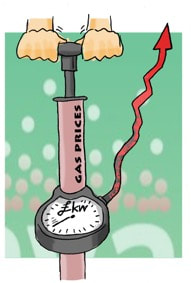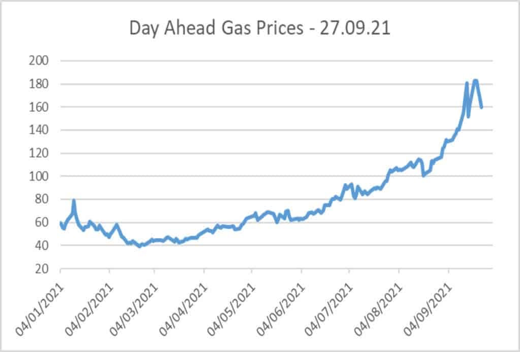|
Nine energy suppliers have gone to the wall and more are likely to follow in the coming weeks and months, under pressure from spiralling gas prices. We have heard the reasons for these price rises: last year's cold winter, a lack of storage (especially in the UK), interconnector issues and the global recovery post pandemic. Perhaps the most concerning issue is the global demand for liquid natural gas (LNG) which is an international commodity that goes to the highest bidder. Britain needs LNG cargoes to balance our system particularly in cold winters. In 2019, 20% of our supply came from LNG imports. Factors likely to keep LNG volatile and tight in supply:
What’s next ?
Of course, Russia may increase supply to Europe and LNG supply is likely to increase, yet it is hard to see gas getting back to “normal” anytime soon. In consequence, our energy tariffs are likely to remain high. Cornwall Insights forecasts that the price cap could rise from the current £1277 to £1660 in April, a 30% increase. Once the supplier crisis is over, there will be a bill to pay for transferring clients from failing utilities. Nils Pratley, in the Guardian, suggests a £500 per customer cost of switching them to a supplier which is solvent. That bill is already £850m, the equivalent of an additional £30 per household and is likely to rise. In the coming years we may see a divergence in pricing between electricity and gas as the Government finally moves Climate Change Levies (CCL) from power to gas. You can expect a 0.1p increase in gas just from the inflating factor of CCL. There is also 0.775p of legacy CCL that the Government has suggested it will move from gas to power over a number of years. You can read more about that here. Summing up, gas prices in particular look likely to rise. Before the increase in price cap the average price per kWh was 3.8p. The 12.5% hike in the cap pushes that figure to 4.28p. If we do see a 30% increase in April and include the CCL increases, the price will rise to eye watering 5.75p. What can I do? There is little that can be done to alleviate this pain, switch now and you will likely be charged £1700. So, it is time to consider energy efficiency including our very own Hydromx, a proven heat transfer solution that will cut energy bills by 20-35%. The price hikes we forecast above could bring down payback periods from 7 years to just 5 for a household consuming 15 000 kWh p.a. Also, you can consider smart thermostats and smart radiator valves that will allow you to optimise run times and zone your home. A combination of all three of these measures could cut your energy consumption by 40%, put money back in your pocket, cut carbon by 1.2 tonnes p.a. and improve local air quality.
0 Comments
Your comment will be posted after it is approved.
Leave a Reply. |
Follow us on social media for all our latest updates
@crewenergyldn go to a category
All
|





